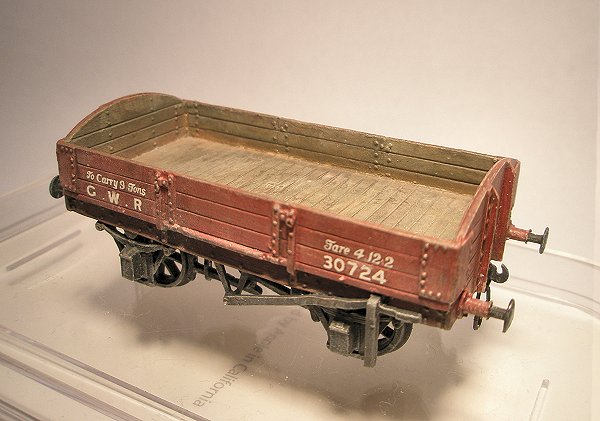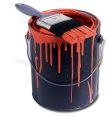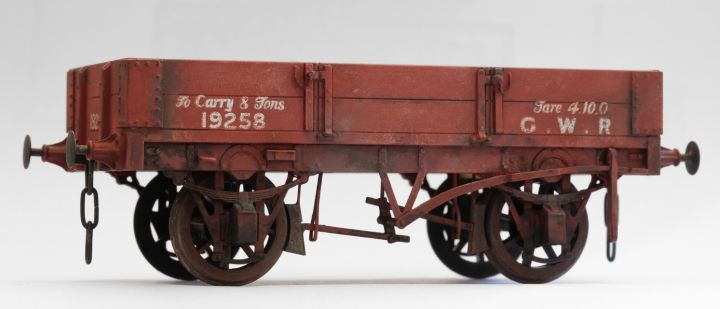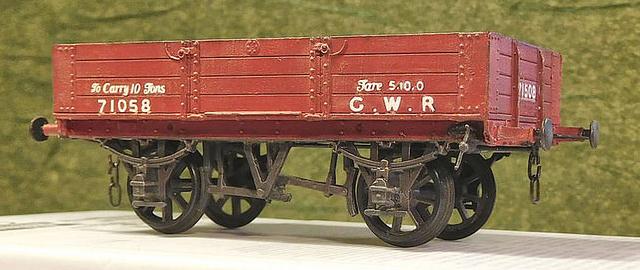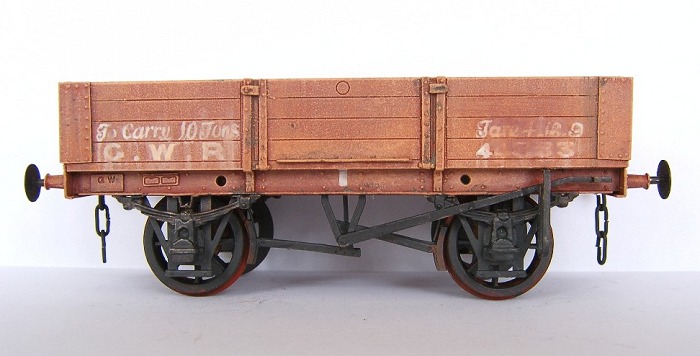| Section Page | Previous Page | Next Page |
GWR early red wagon livery
Mikkel's recipe for faded 'Swindon Improved Wagon Red' uses Vallejo acrylics:
Before the introduction of the well-known standard grey livery for goods stock, GWR wagons carried a red livery that has proven to be quite an enigma for railway historians and modellers. Chris Awdry's book Brunel's Broad Gauge Railway states "Later, a red livery was introduced, probably around the mid-1860s". (The wagon livery before that time is thought to have been "brown colour and varnished".) In the following notes, John Lewis discusses some of the evidence of when the livery changed from red to grey and makes his own suggestion. John's notes were originally provided as part of a discussion on the now-deceased former version of the GWR e-list. A collection of other references on the red wagon livery are also provided below. Many thanks to John for his notes, and to Ian Espiner, Mark Austin and others from the GWR e-list for additional information.
" We don't know when the changeover from red to grey wagon livery officially took place, or exactly what was the colour. Unfortunately you cannot tell the difference between red wagons and grey ones in monochrome photographs taken using orthochromatic film (i.e. blind to red). There is a newspaper report saying that the GWR were newly painting wagons "bright red" in May 1892. There was an article in the October 1904 issue of Railway Magazine entitled "The Colour Schemes of our Railways" by one J.B. Baron Collins, MA. This includes a diagram which gives the colour of wagons as "dark red, also grey". The red colour is described thus: "... even its trucks are cheerfully coloured a warm red, probably the only decided red trucks going." If we assume that the colour change from red to grey livery coincided with a [general] livery change, then we seem to have these options:
The obvious date of change is c 1904 when the large G W was adopted [because of the Collins article mentioned above, ed]. Alternatively it could have been with the adoption of the cast iron number plates, although that seems to have been spread over some time. I have not yet found any contemporary reference to a changeover in colour in the 1870s [as suggested by Slinn, see below] or 1898. This is not to say it is wrong, it is just that I cannot find any evidence for it. However, there is no guarantee that the colour change coincided with a livery change. It is all very frustrating. There ought to have been a circular issued instructing the C&W staff to paint wagons grey, but no signs of it so far." * Webmaster's note: the use of 'general' in describing the adoption of the cast wagon plates is misleading, because contemporary photos indicate wagons with cast plates were greatly outnumbered by wagons with painted numbers.
Re red wagon livery:
Webmaster's note: The above illustrations show red applied to metal solebars. It is known that the GWR did start painting metal solebars on some wagons in black after 1888, to match the black of the running gear, but it is not known whether or when the black became generally applicable to metal solebars. In any event, 'all-over grey' was subsequently adopted soon thereafter. |
| Section Page | Previous Page | Next Page |
